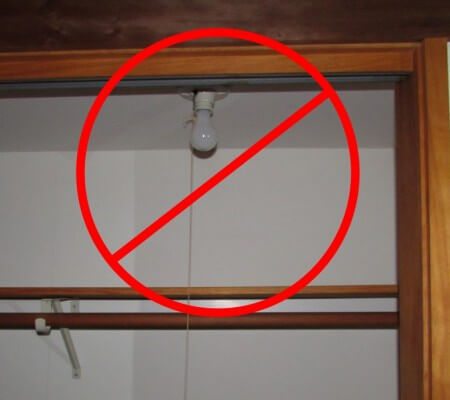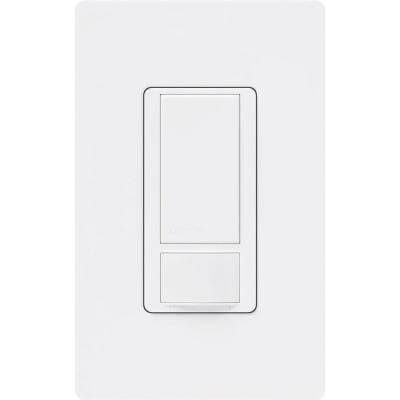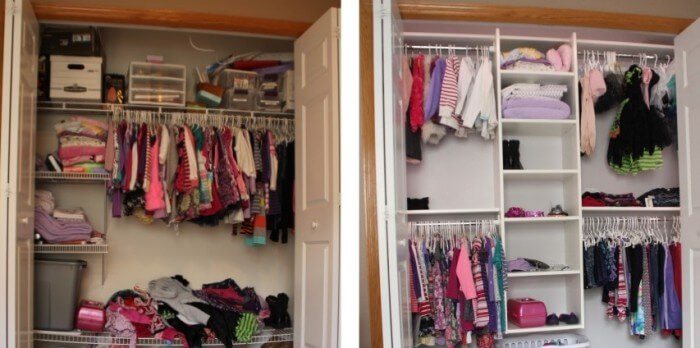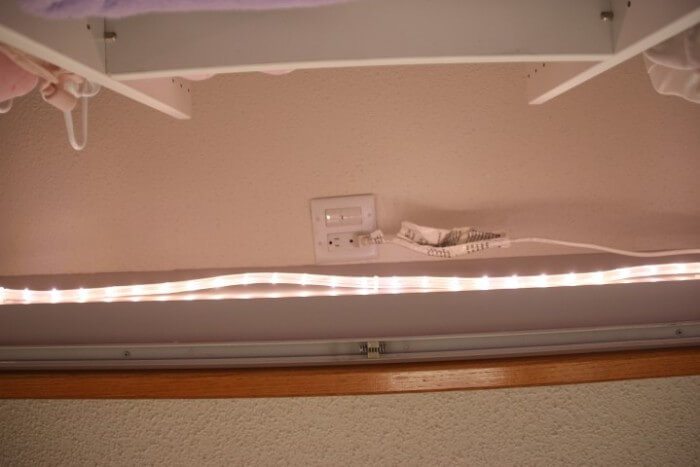A single closet rod at eye level with a shelf above it is an old, outdated closet setup. I don’t call myself an organizational expert, but I do get to look at a lot of closets, and it seems that most closets have this same setup. If you have this closet design in your home, you’re probably due for an upgrade. If you want ideas for closet organization, check out Pinterest.
My two closet makeover tips are to add automatic lighting to your closet if you don’t already have it, and to consider hiring out the reorganization of your closet. Don’t laugh, I’m serious.
Consider Hiring Out
I live in one of those houses with the cheap wire shelving in every closet. It ain’t fancy, but it works. I’ve reorganized all of the shelves except for the ones in my daughter’s room, which have remained untouched. Why? Probably because my wife never asked me to redo them. The day to redo those shelves finally came, but I lucked out this time and hardly had to do any work, thanks to the services of a local closet organization company by the name of Home Options, Inc.*
Their installed price for a new wood laminated shelving system in my daughters closet was about the same as what I was able to find for the product alone, by shopping sites like Home Depot and Costco. Hiring Home Options to do the new closet system was a very easy decision to make, and it turned out great. They also offer wire shelving, with installed prices very similar to the products alone.
Here’s a before and after pic, which obviously included some de-cluttering, painting, and better lighting for the “after” part:
Add Automatic Lighting
My other piece of advice is to add automatic lighting to your closet if it’s not already there. Of course, some houses will be much easier to wire than others, but if there is attic space above the bedroom, there’s a good chance that there’s a circuit that can be tapped off of to add lighting to the closet. There are two components to consider when adding closet lighting; what type of lighting to add, and how to turn the lights on and off.
 Electrical safety standards will somewhat limit the available options for closet lighting. While the old standard was to not have any bare light bulbs within 18″ of a shelf, today’s standard for closet lighting safety has a big list of requirements. I won’t get into all that, but if you’re interested in those requirements, google up NEC 410.16.
Electrical safety standards will somewhat limit the available options for closet lighting. While the old standard was to not have any bare light bulbs within 18″ of a shelf, today’s standard for closet lighting safety has a big list of requirements. I won’t get into all that, but if you’re interested in those requirements, google up NEC 410.16.
As for turning the closet lights on and off, the worst possible method is to install a fixture with a switch built in, such as a pull-chain light or a fluorescent light with a switch built into it. I’ve lived in homes with those types of lights, and I’ve found that I don’t use those types of lights unless I have to.
The next best method is to have a switched light. That’s pretty much the standard, and it works, but it’s not my method of choice. If you already have a switched light for your closet, it probably works well enough to just leave the way it is, but if you’re installing new wiring…
 The best way to switch a closet light is with a motion sensor. I’m generally not a fan of motion sensor light switches, but a bedroom closet is a perfect location for this. The light turns on when you need light, it turns back off on it’s own, and the motion sensor can be hidden inside the closet. This not only hides it from view, but prevents the closet light from turning on when you don’t want it to. I’ve done this at several closets, and it has worked out quite well. Motion sensors cost about $20.
The best way to switch a closet light is with a motion sensor. I’m generally not a fan of motion sensor light switches, but a bedroom closet is a perfect location for this. The light turns on when you need light, it turns back off on it’s own, and the motion sensor can be hidden inside the closet. This not only hides it from view, but prevents the closet light from turning on when you don’t want it to. I’ve done this at several closets, and it has worked out quite well. Motion sensors cost about $20.
The photo below shows one such example, looking up at the motion sensor on the ceiling from inside the closet. The motion sensor controls power to the outlet.
* The other reason I didn’t have much work to do on this project was because my wife pulled all of the old shelving out, patched all of the holes in the walls, and repainted. ♥



bill
March 24, 2015, 6:27 am
The rope lights are a good way to get light into areas without taking up a big space and eliminating the issue of things blocking the light.
Attached some to the studs in a crawl space that gets used for storage (along with insulating the joists above it).